Variety of cookware styles
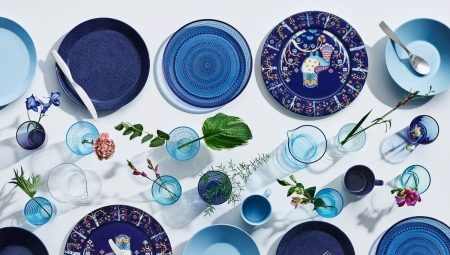
There are no trifles in interior design. On the contrary, every detail can either play with the same notes with the overall composition, add perfection to it, or completely ruin the whole picture. Kitchen decoration will not be complete if the dishes are not chosen correctly. It is necessary to decide on the general style of the room, then the style choice of dishes will not be difficult. It is enough to choose, within the established framework, what you like best. It doesn't matter which direction you prefer: minimalism, hi-tech, loft, boho or baroque, rococo, art deco, empire. For any style, you can choose harmonious details.
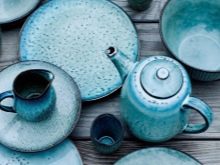

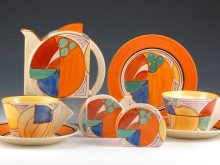
Retro
The appeal to the past is always in great demand. Therefore, the retro style is extremely popular largely due to the fact that its definition is quite capacious. Most often, it means the stylization of the times of the turn of the XIX-XX centuries. There are a number of manufacturers focused on the production of dishes in the vintage style.
Most often, cast iron and enameled items prevail in such collections. Such materials were widely used at the beginning of the 20th century. But modern materials are also actively used - for example, ceramics, stylized as retro.
Much attention is paid to traditional forms - roundness, massiveness, as well as colors - neutral, classic and pastel.
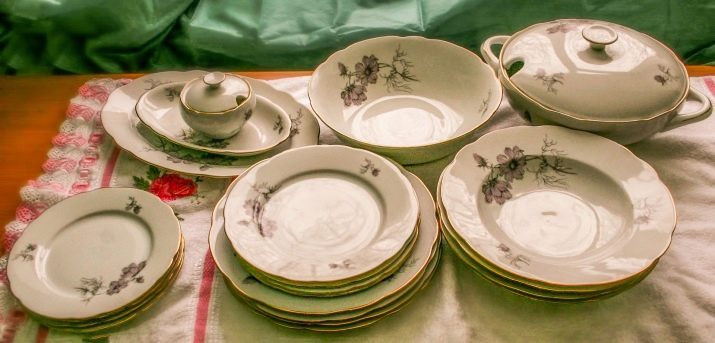
Porcelain dining rooms, tea, coffee sets fit perfectly into the composition.
In Russia, retro style has another direction - Soviet. The dishes of this era are very popular: cup holders, cans, enamel teapots, mugs, ladles, as well as crystal and porcelain dishes.
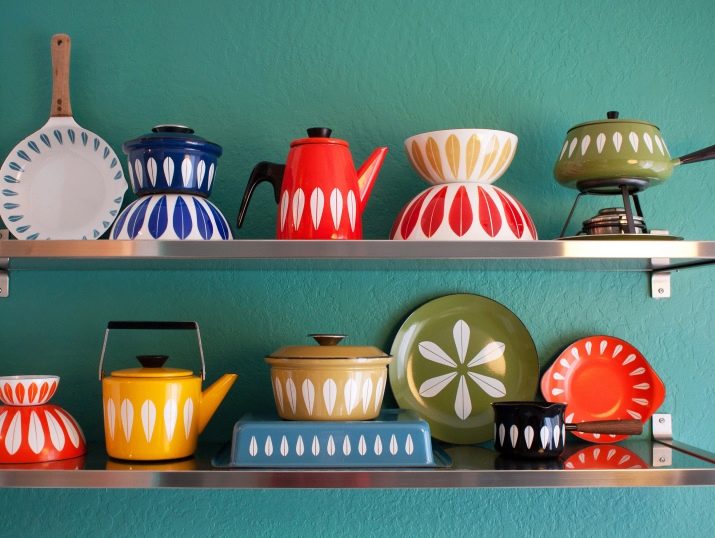
Russian
In the Russian style, designers distinguish several main directions. Depending on the color scheme, you can choose Gzhel, Khokhloma, Dymkovo toys.
- Khokhloma, first of all, - a spectacular catchy painting, built on the contrast of color. Dominated by black, yellow, red. This style is often used in the design of the kitchen, as it gives the room brightness and comfort. The variegation of colors balances the black base, so the overall impression of such dishes is quite cheerful. Khokhloma dishes are perfect for decorating a folk-style kitchen.
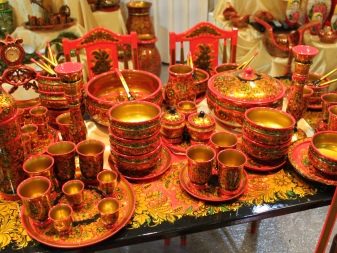
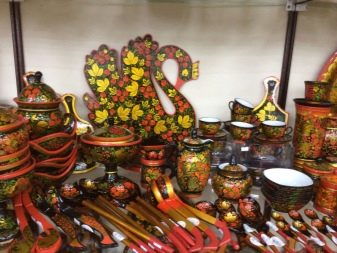
- Gzhel more sophisticated, laconic, so it looks great in a kitchen decorated in white, blue tones. Dishes with such curls will decorate even a strict interior, bring a lot of freshness, life, and positive emotions into it.
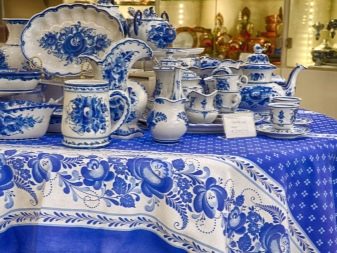
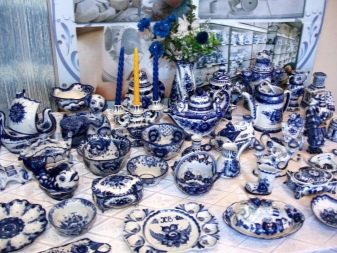
- Dymkovo ornament can also be used when painting dishes. It will be appropriate if you want to create something bright, cheerful, cozy.
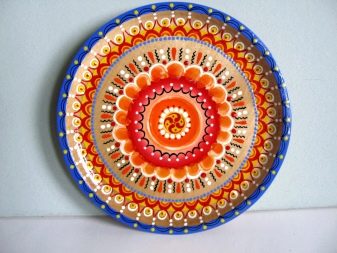

In addition to color, material also matters. Most often these are ceramics and clay, as well as wood. Painted wooden spoons, a jug and a bowl with intricate ornaments will give your kitchen a very spectacular look.
Modern
A distinctive feature of the style is the absence of sharp forms, rigid geometry, clear silhouettes. Modern is actively used in interior design, creation of architectural compositions and household items, for example, dishes. It was Art Nouveau that at one time united the art of the applied type and handicraft. Art Nouveau crockery is the embodiment of real artistic ideas in a practical form.

Ceramic and metal dishes are the basis of the style. The services, plates, sets in this style are very elegant and spectacular.
Silhouettes of objects are graceful, soft, restrained colors. Painting, ornament, floral motif are actively used.
Such dishes will decorate a luxurious modern kitchen. Keep in mind that caring for such utensils is not easy. Cleaning metal objects, for example, will be time-consuming.

Japanese
This style has gained incredible popularity in recent years. This was largely due to the spread of Japanese cuisine and the opening of many laconic Japanese restaurants. Japanese food and style have become part of our life, so kitchens are often decorated in this direction. Manufacturers in all price segments presented to the attention of buyers a variety of collections of Japanese tableware.
These are very elegant, original kitchen items, although not very practical. There are quite a few sharp corners in them, which makes manual cleaning difficult.

It is better to entrust washing to the dishwasher.
Japanese food culture has led to the creation of highly aesthetic serving items. After all, the beauty of the dish for the Japanese is as important as the taste. The unusual shapes are mesmerizing - for example, plates in the shape of a square, rhombus or oval. Dishes in the form of leaves and boats are very popular. These options can serve as both serving items and interior decor.
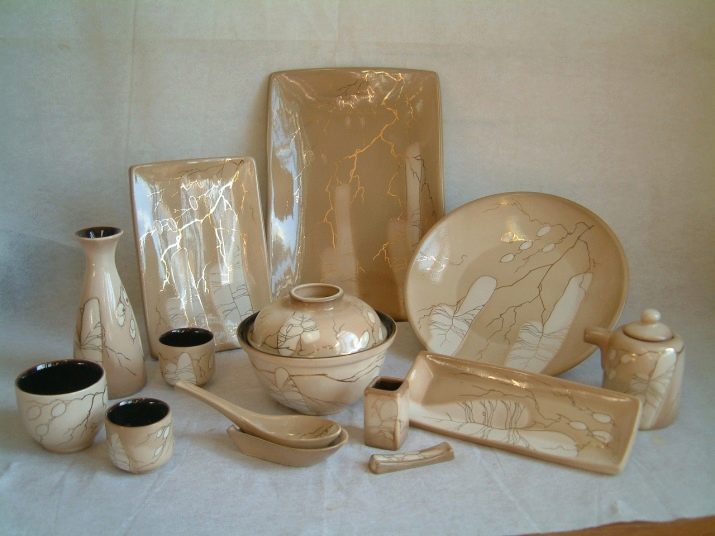
Scandinavian
Another incredibly popular young style, which not only does not lose its relevance, but is gaining momentum every year. It is functional, laconic, neutral. Its main goal is comfort. The catchy accents that emphasize the restraint of the main range are very effective.
The shape of the Scandinavian crockery is simple, with minimal or no patterns. The design is most often monochrome or with a plain uncomplicated pattern.
The color scheme is predominantly white, pastel, gray, blue. Bright accents are permissible, often for this purpose, it is dishes with catchy elements that are used.

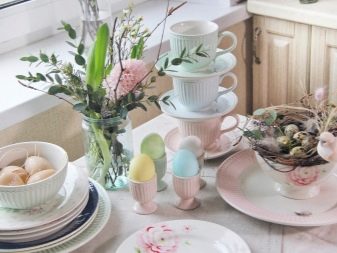
Country
Rustic dishes correspond to the general mood of the composition: muted, multicolored, juicy. She seemed to have faded slightly in the sun. Still lifes, scenes from village life, landscapes revive the dishes. Items are usually created in warm, natural colors.The most popular colors are brown, cream, terracotta, olive.
Country-style tableware plays a big role in the interior, since, by tradition, it is not hidden in closets, but put on public display.
Large metal pots, pot-bellied saucepans, frying pans look very impressive.
Bowls, rounded plates with patterns, painted ceramic jugs give the room a cozy atmosphere. It is very important that the dishes do not look new. Just like in retro style, vintage mood is very important here.
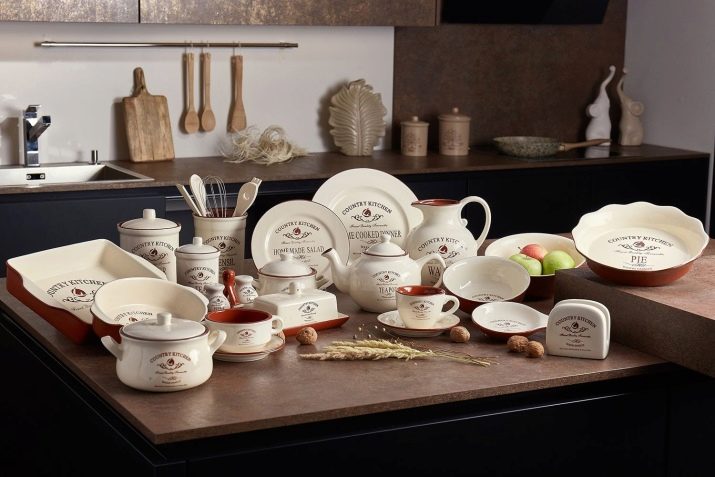
Loft
Loft-style crockery must comply with the principles of industrialism combined with modernity. Most often, rough ceramic serving items are chosen for such interiors. The main emphasis is on shades of brown, black, gray. Forms are both as simple as possible and flowery.
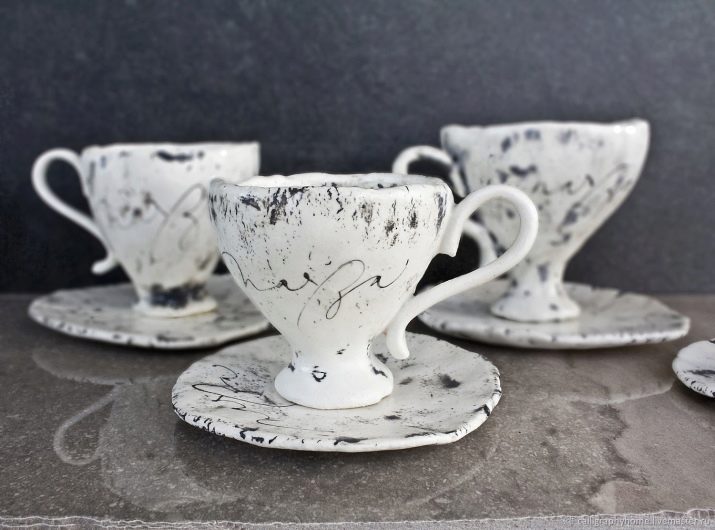
Provence and shabby chic
Provence - the style of the French province, light, delicate, airy. It is dominated by white, pastel, floral motives, lace. All this is reflected in the dishes, most often earthenware, wood or ceramic. The patterns that decorate the dishes are not too pretentious: flowers, lavender, sunflowers, weaving.
Another cozy design, close to Provence with the features of aging, pastels and the dominance of white, is shabby chic.
It is also extremely delicate and light, with a lot of weaving, lace and floral motifs. The decor is dominated by patterns of roses, birds, angels.
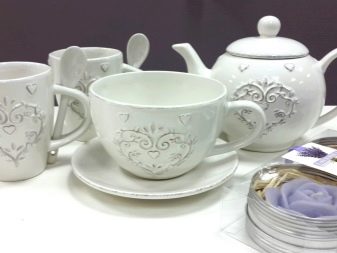

English
An English style kitchen assumes that the dishes will be one of its main decorations. Often it is she who is chosen as the main accent. Kitchen decor includes many different details: vases, teapots for tea leaves, ceramic and porcelain serving items.
The kettle and coffee pot must be prominently displayed. Open shelves are decorated with beautiful plates and other utensils.
The color scheme is most often a combination of a white base and soft, but expressive patterns and ornaments. Flowers and landscapes prevail.
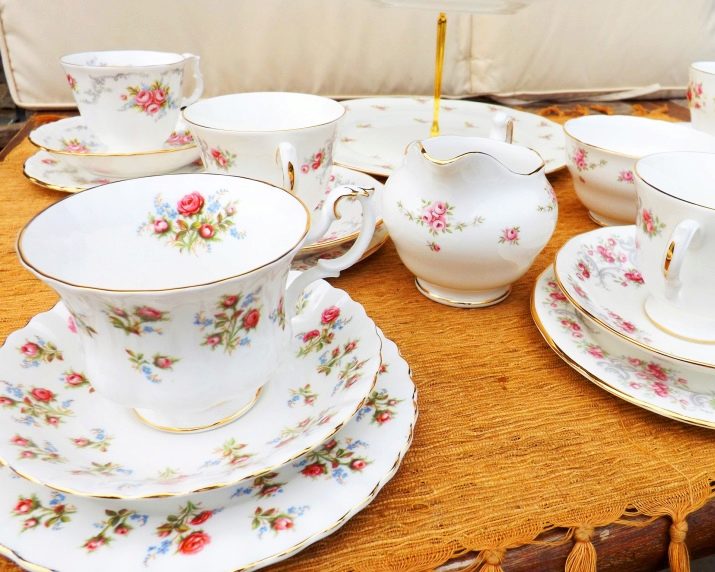
Mediterranean
Greek-style crockery is especially popular due to the prevalence of the Mediterranean style in the interior. Such dishes most often have a national traditional ornament.
Ceramic and earthenware is dominant, with an antique mood prevailing. The color scheme is predominantly snow-white with rich sunny patterns.
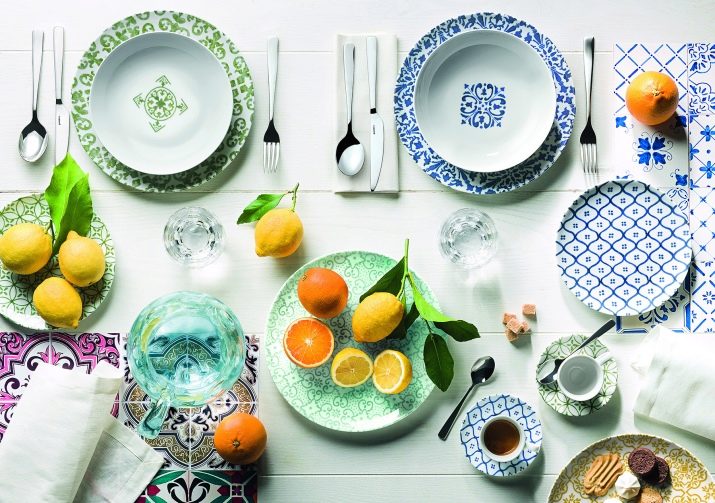
The dishes are uncomplicated in shape, devoid of pretentiousness. This is a very cozy style.
The Mediterranean style also actively uses the marine theme. Crockery in a nautical style will very effectively complement the corresponding interior. It is dominated by white, blue, blue with a slight splash of contrasting tones, for example, red.
For an overview of the classic style tea set, see below.








